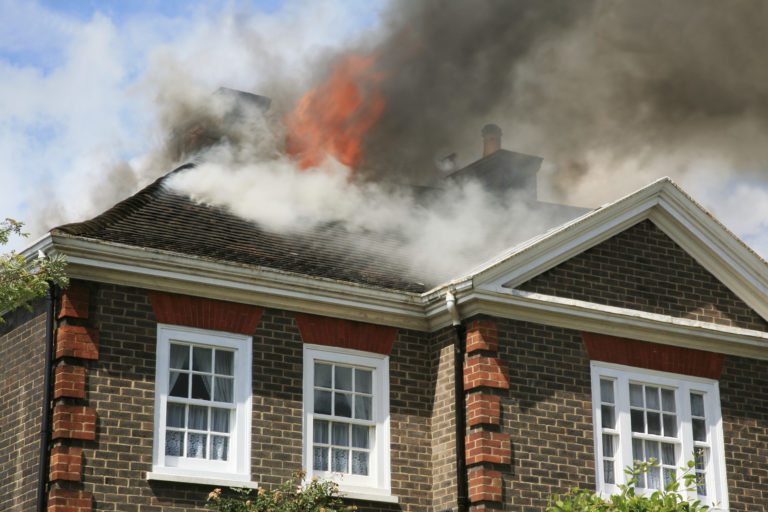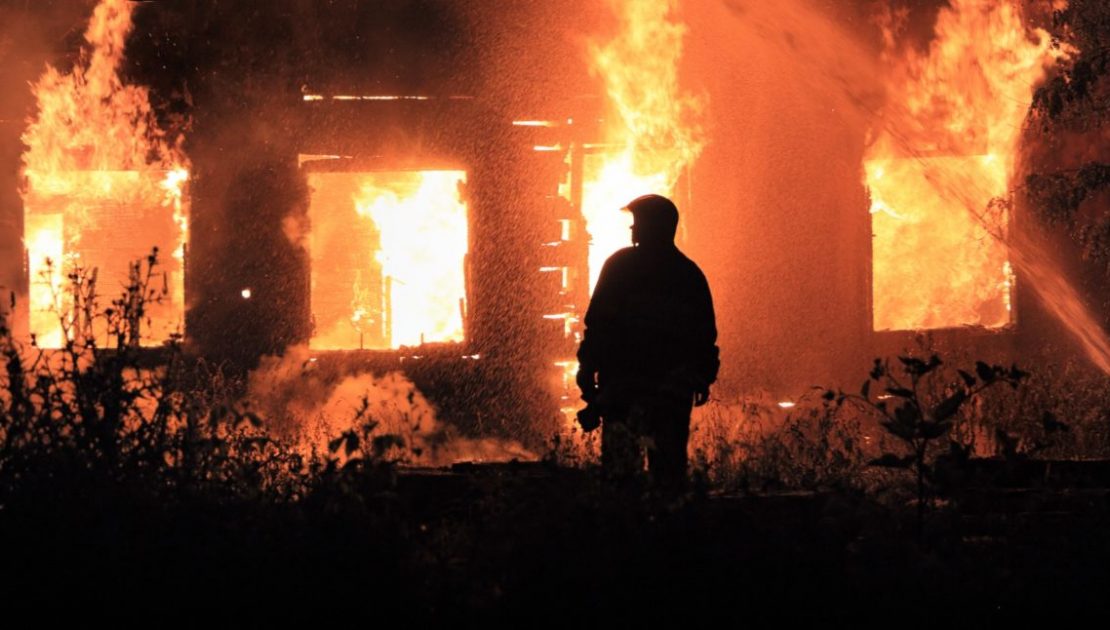Fire Prevention in a Period Property
-
15 March 2023
-
Posted by: Castleacre
Naturally one of the biggest concerns for any home owner is fire. Fire risk is often greater with older listed buildings and period properties but fire prevention can be complicated by non- standard materials and structures, such as timber frames and thatched roofs.
The rapid progress of fires at Notres Dame, the Glasgow School of Art and Windsor Castle and the difficulty in bringing them under control, will send a shudder down the spine of anyone who is responsible for a period building. All these fires took hold while restoration projects were underway, which is when buildings are vulnerable to fire risk but the ferocity and speed of their progress also relates to their structure and materials. So how can you reduce fire risk in period property?Domestic period properties rarely have fire doors and may have a layout which can actually advance fire travel rather than impede it; they are more likely to house open fires, ranges and wood burning stoves which can also pose additional risk and roof structures in old properties are rarely partitioned increasing the risk of a fire spreading unnoticed.Unfortunately the costs of reinstating or re-building a listed building are also greater than their modern counterparts – partly because of the requirement for repair with like for like materials but also because of the need for specialist craftspeople when reinstating a building’s original features.As with so many things prevention is better than cure.
Reducing Fire Risk
Fireplaces and Chimneys
- Ideally chimneys should be swept at least twice a year by a fully registered chimney sweep – once in the early Autumn before use and towards the end of the winter season.
- If you are installing a wood burner or multi-fuel stove, it is a good idea to use a registered HETAS engineer who can help you ensure that your chimney is correctly lined. An appropriate liner is very important because wood burners operate at higher temperatures than an open fire and this can be hazardous if brick work over heats. It is advisable to monitor the temperature of a wood burner/ stove when it is in use to ensure it is not burning too fiercely – there are simple magnetic temperature gauges and even smart thermometers which can connect to your phone.
- Damp wood creates much more soot and tar, adhering to brick work and chimney linings as it cools, creating a sticky flammable surface. Chimney fires which start because a tar coating has caught light can be particularly difficult to extinguish. Heat can fracture brickwork and weaken the chimney which in turn can impact on the structural integrity of a building.Chimney fires can of course spread – especially along the roof line. It is particularly important that only well-seasoned wood (ideally less than 20% moisture) is used in fireplaces and wood-burners. Kiln dried wood is ideal but if you are using your own wood than it usually requires around three years to dry out properly. Wood briquettes, made from compressed and dried wood-waste are an alternative recommended fuel.
- HETAS engineers also advise that you do not burn paper waste in a wood burner or open fire.
- Fit a bird guard to the top of your chimney to prevent nesting birds from building their home at the opening of the chimney pot with highly flammable material – this can be particularly dangerous where thatch properties are concerned.
- The surface of thatched roofs can be sprayed with a fire retardant, a sensible options as research has shown that one of the most likely causes of a thatch fire is a stray spark from the top of the chimney. Fire retardant spray needs to be re-applied every 5-6 years.
Building Works
- If you are having any building works you need to ensure that heat guns and blow torches are used with extreme caution and never in an attic/roof space.
- If the building is unoccupied during works – checks should be made at the end of each day that all tools and equipment are switched off and unplugged.
Electricity and Power supplies
- Electric wiring is another source of fire risk. Old wiring in period property must be replaced by modern wiring, electricity points and fuse boxes, and these should be installed and certificated by a qualified electrician. It is a good idea to regularly check the integrity of exposed wiring in the loft area against vermin damage and to ensure that it isn’t covered by insulation materials which can cause overheating within cabling.
- Power points in any property should not be overloaded as this can create dangerous surges in current.Don’t leave phones on charge (fires started by mobile batteries overheating are well documented) or other electrical equipment over night. Similarly electrical goods should not be left on standby.It isn’t advisable to run washing machines, driers or dishwashers during the night or when no one is in the home.
- Extension leads should not be used with electric heaters or air conditioners which both draw substantial current with the potential to overload a circuit.
- If you have recessed ceilings make sure the bulbs are low energy as standard bulbs can also reach high temperatures and potentially set light to surrounding material.
- If an electrical fire does start don’t throw water onto it – your first action should be to switch all power off at the fuse box and unplug the relevant item if it is safe to do so.
Smoke Alarms and Fire Extinguishers
- One of the most important safety measures you can take is to install at least one smoke detector on every inhabited floor as well as in the attic space. Unlike new timber old dense timber in roof spaces can initially be slow to burn but once it is alight it is notoriously difficult to extinguish – in the event of a fire a smoke detector in the roof space will give you an invaluable early warning. Interlinked smoke detectors are ideal in larger older properties because they alert people in other areas of the house to a fire. Smoke detectors are only effective if you regularly to ensure they are working properly.
- Fire extinguishers and fire blankets are advisable particularly in vulnerable areas such as kitchens and utility areas and portable escape ladders on upper floors.



